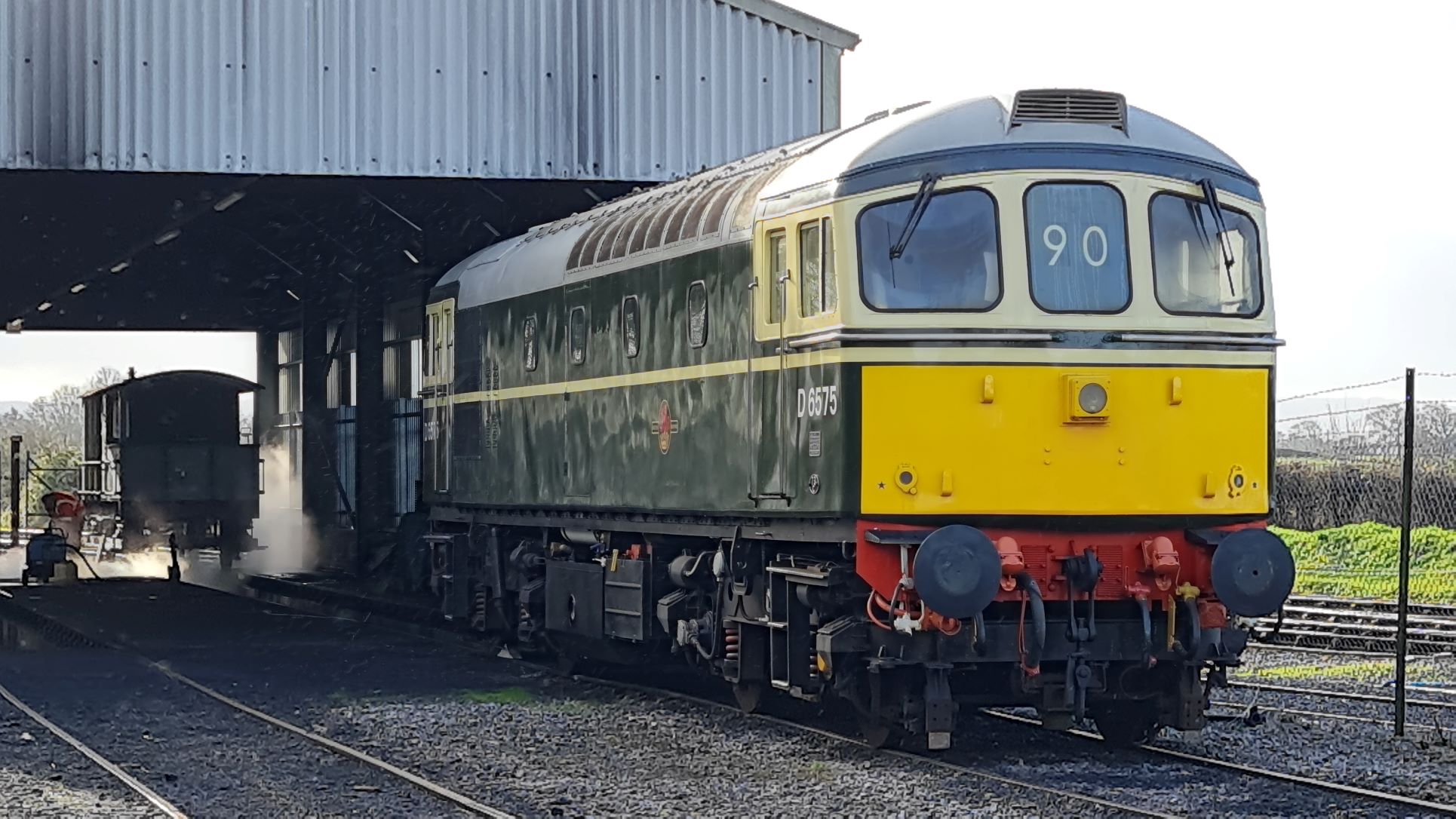
Class 33 ‘Crompton’ D6575 (33 057) stands outside Westridge Shed at Bishops Lydeard on Saturday 5th February 2022 as a WSR volunteer carries out steam cleaning of the ex-GWR Toad brake van in the background. D6575 is currently the ‘duty loco’ and is therefore fully operational and available for use at any time. Photo by Mark Ireland © CC BY-NC 3.0
With all of the news that is being made by our two major restoration projects at Williton, it is easy to lose sight of the two locos that do most of the work on the WSR, our rugged and reliable BRCW Class 33 ‘Cromptons’, D6566 (33 048) and D6575 (33 057). One of these locos is kept available at all times as the designated ‘duty loco’ so that it can be pressed into use on any kind of activity, from engineering trains to crew training turns.
The Class 33s were designed and built by the now-defunct Birmingham Railway Carriage and Wagon Company (BRCW) of Smethwick, Birmingham, with the delivery of the first loco D6500 taking place on the 30th January 1960, and the last of the series of 98 being put to work in May of 1962. The class was built to meet the specific requirements of the Southern Region (SR) of British Railways, and featured dual braking (vacuum and air) and Electric Train Heating (ETH) from new, which was a first for the Modernisation Plan locomotives.
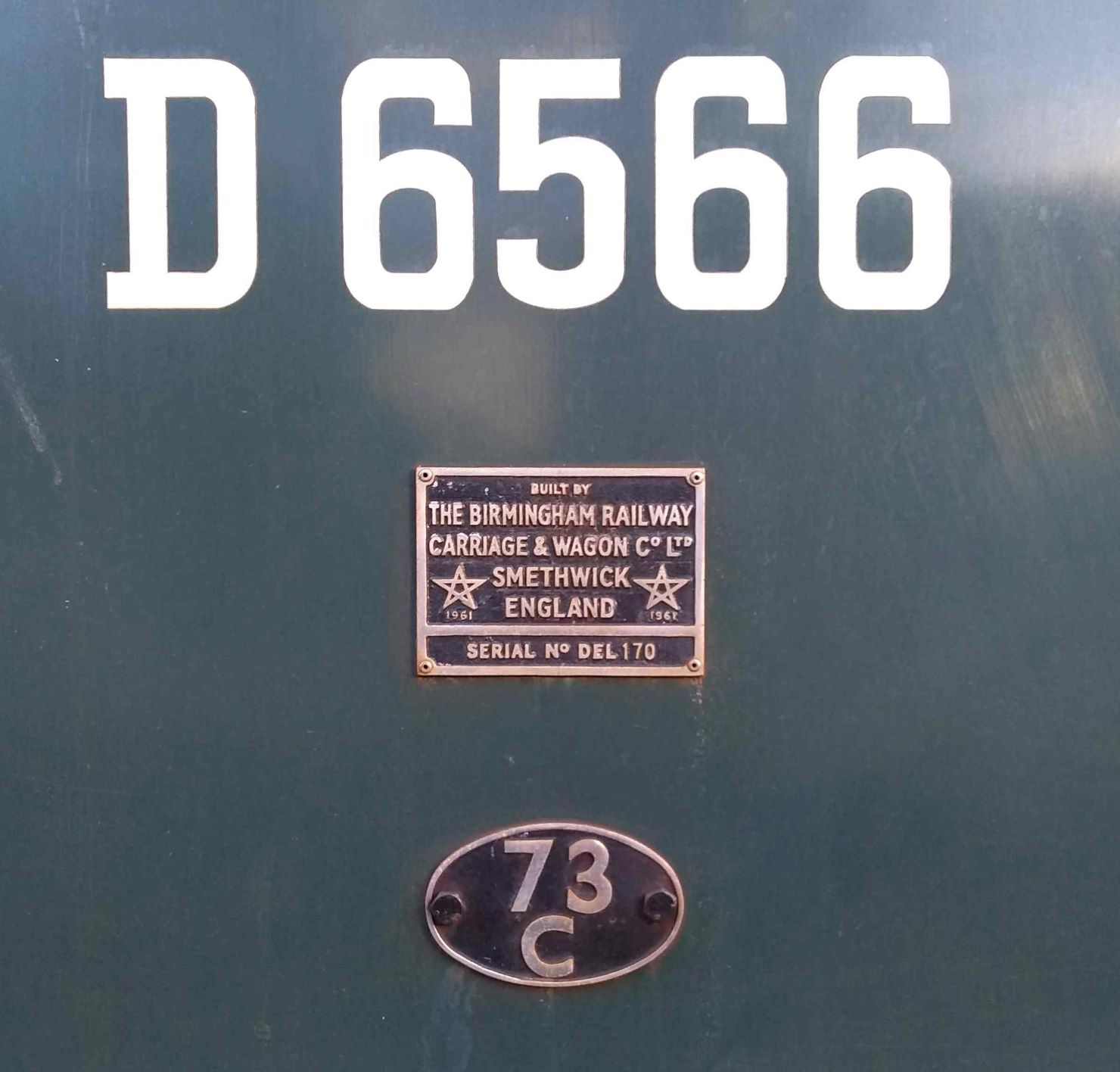
Birmingham Railway Carriage & Wagon Company (BRCW) 1,550 hp Type 3 (later Class 33) serial number DEL170, ‘Crompton’ D6566 (33 048) of August 1961 carries shed plate 73C (Hither Green, Lewisham, Kent) at Williton on 24th December 2020. Photo by Ian Robins © CC BY-NC 3.0
Although the ETH capability is not put to use on the WSR, the dual braking is very useful and it allows the loco to haul modern vehicles that are not fitted with vacuum brakes. The Class 09 shunter D4107 (09 019) at Bishops Lydeard is also an ex-SR machine and is also dual-braked. The WSR maintains and operates a rake of dual-braked Mark 1 coaches that are used to keep staff familiar with the differences between the two braking systems.
While on the subject of brakes, Class 33 D6566 (33 048) is currently at Williton undergoing a brake block change as part of her scheduled maintenance plan. The brake blocks are made of cast iron and they gradually wear down, the difference in diameter being taken up by an automatic device called a ‘slack adjuster’. While undergoing inspection at Williton, it was determined that one of the ‘slack adjusters’ on the loco was not performing as well as it should, so it was replaced with a spare while the braking assembly was being worked on.

Class 33 ‘Crompton’ D6566 (33 048) is pictured undergoing brake block and slack adjuster replacement at Williton on a cold and windy Saturday 5th February 2022. DEPG volunteer loco manager Ian R was assisted by Tom in the effort to change all 16 brake blocks without the use of a pit. Photo by Andy Royal © CC BY-NC 3.0
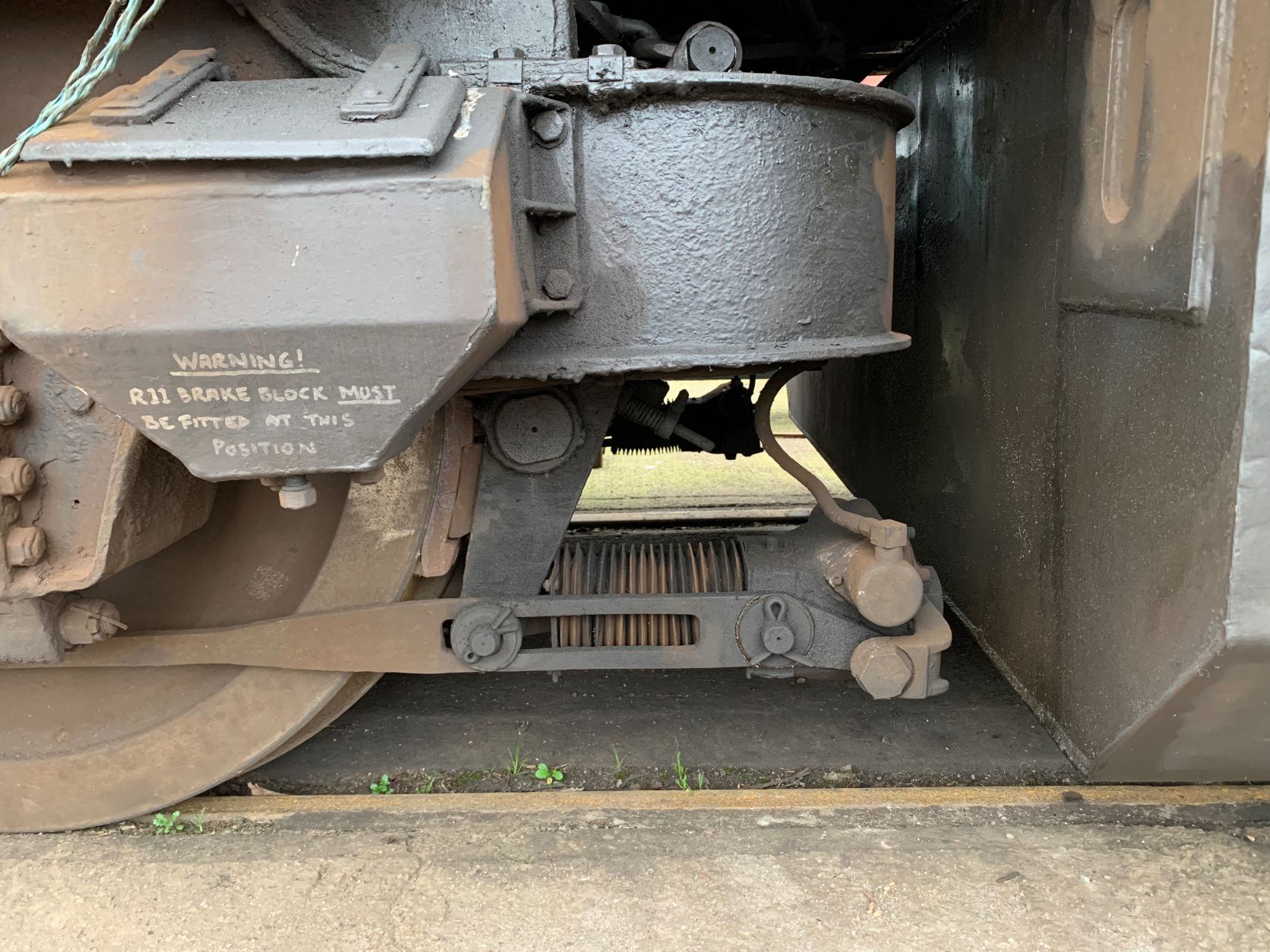
Class 33 ‘Crompton’ D6566 (33 048) ‘A’ end bogie is pictured at Williton on Saturday 5th February 2022, before the brake blocks were changed. The slack adjuster (the part with the bellows) can be seen in the extended position, compensating for the wear in the brake blocks. Photo by Andy Royal © CC BY-NC 3.0
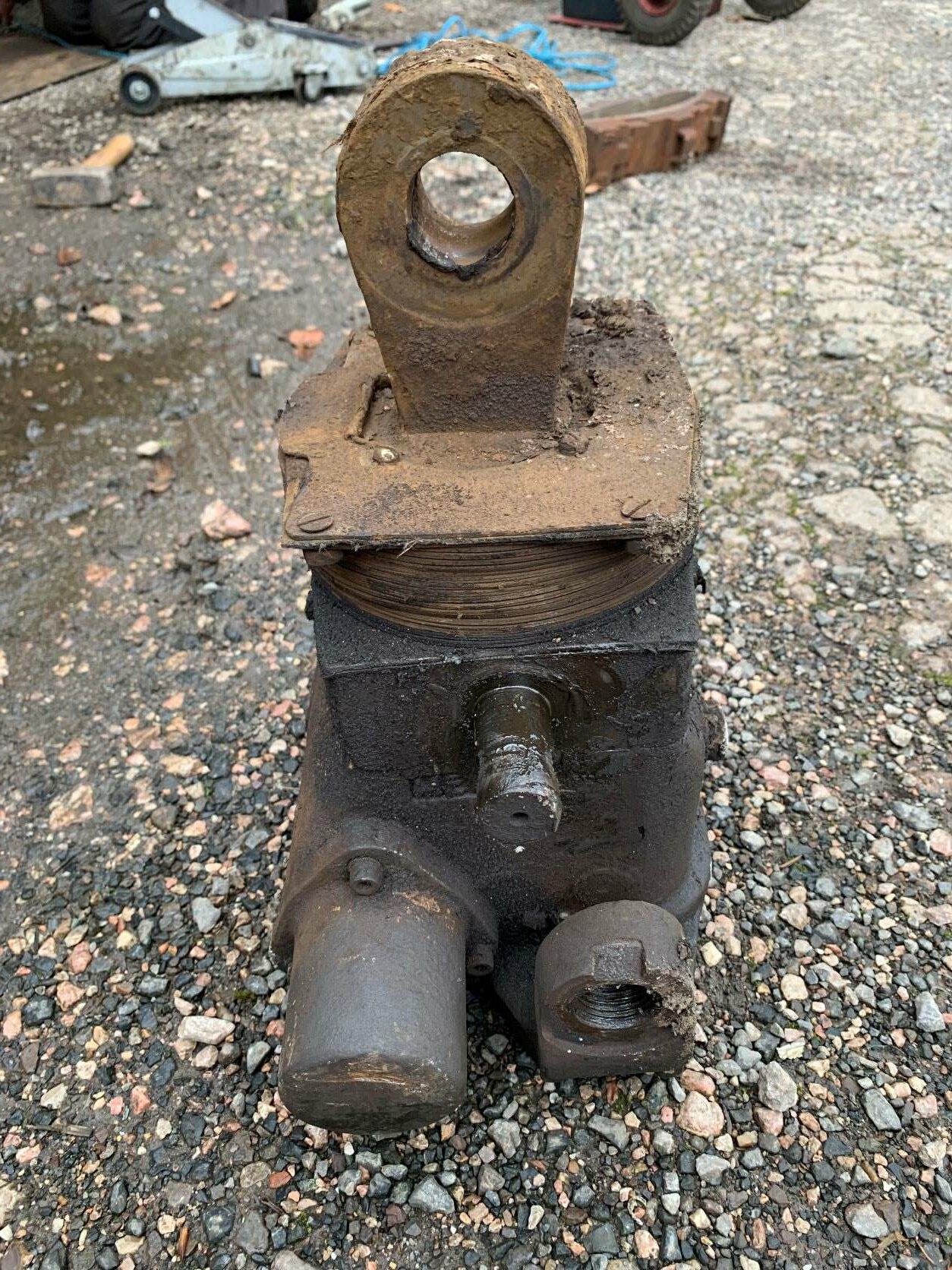
Class 33 ‘Crompton’ D6566 (33 048) – one of the eight ‘slack adjusters’ was removed from the loco at Williton on Saturday 5th February 2022. It will be refurbished and then kept as a spare. Compared to the previous picture, the fully compressed bellows shows the extent of the movement of the part. Photo by Andy Royal © CC BY-NC 3.0
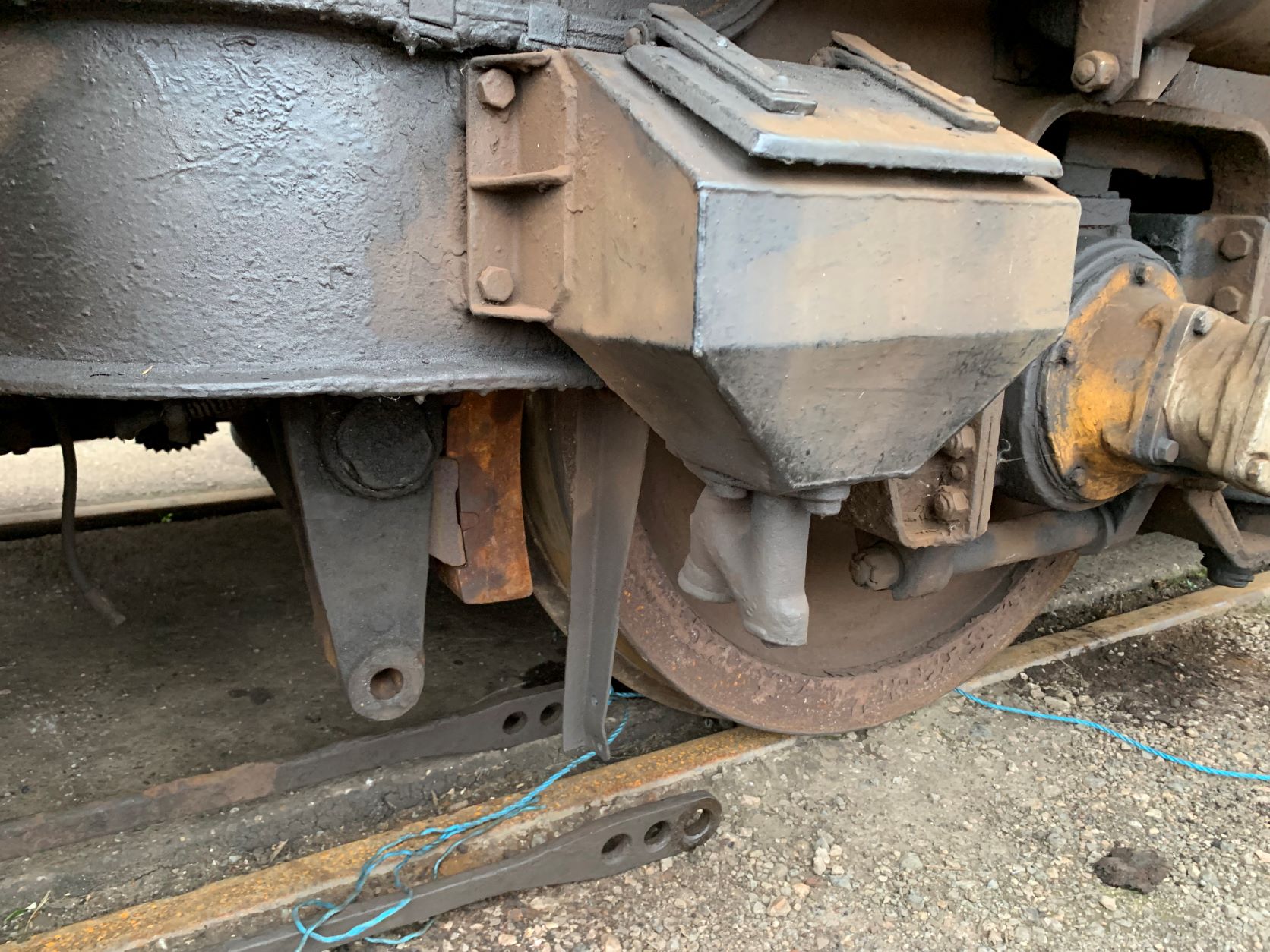
Class 33 ‘Crompton’ D6566 (33 048) ‘B’ end bogie is pictured at Williton on Saturday 5th February 2022, after one of the brake blocks had been changed but before the replacement slack adjuster had been fitted. The increased thickness of the new brake block is apparent. Photo by Andy Royal © CC BY-NC 3.0
Upon completion of the work, the braking system will be inspected and tested in accordance with the formal ‘Vehicle Inspection & Brake Test’ (VIBT) procedure before the loco is released to traffic. This will then allow both Class 33s to be made available for use, if the need arises.
VERY IMPORTANT DATES FOR YOUR DIARY – the WSR’s 2022 DIESEL GALA will take place from Thursday 9th through Saturday 11th June 2022, so keep these dates free and make a plan to attend ! Click this link to the WSR website to view the dates for other WSR events that are planned for 2022.
LOCO NEWS:
Class 52 D1010 ‘WESTERN CAMPAIGNER’ – work progresses on the cab at ‘B’ end, the restoration now reaching window height and resulting in the need to remove the drivers side aluminium frames and sliding glass windows so that welding could take place to repair corrosion damage around the door pillar. The following pictures tell the story:
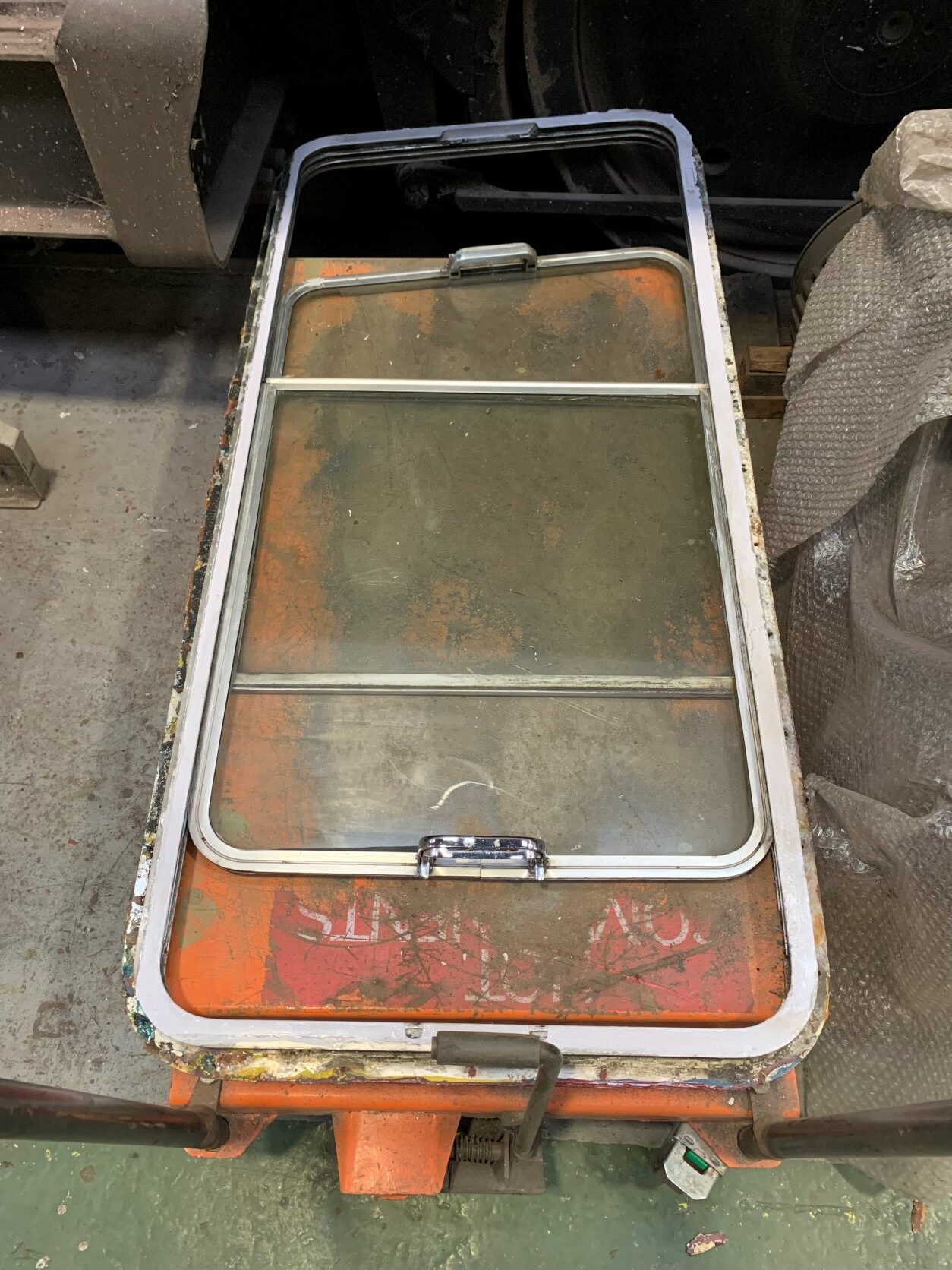
D1010 – the sliding windows and their aluminium frames were removed from the loco at Williton on Saturday 5th February 2022 so that bodywork repairs could take place on the door pillar on the driving side. Photo by Andy Royal © CC BY-NC 3.0
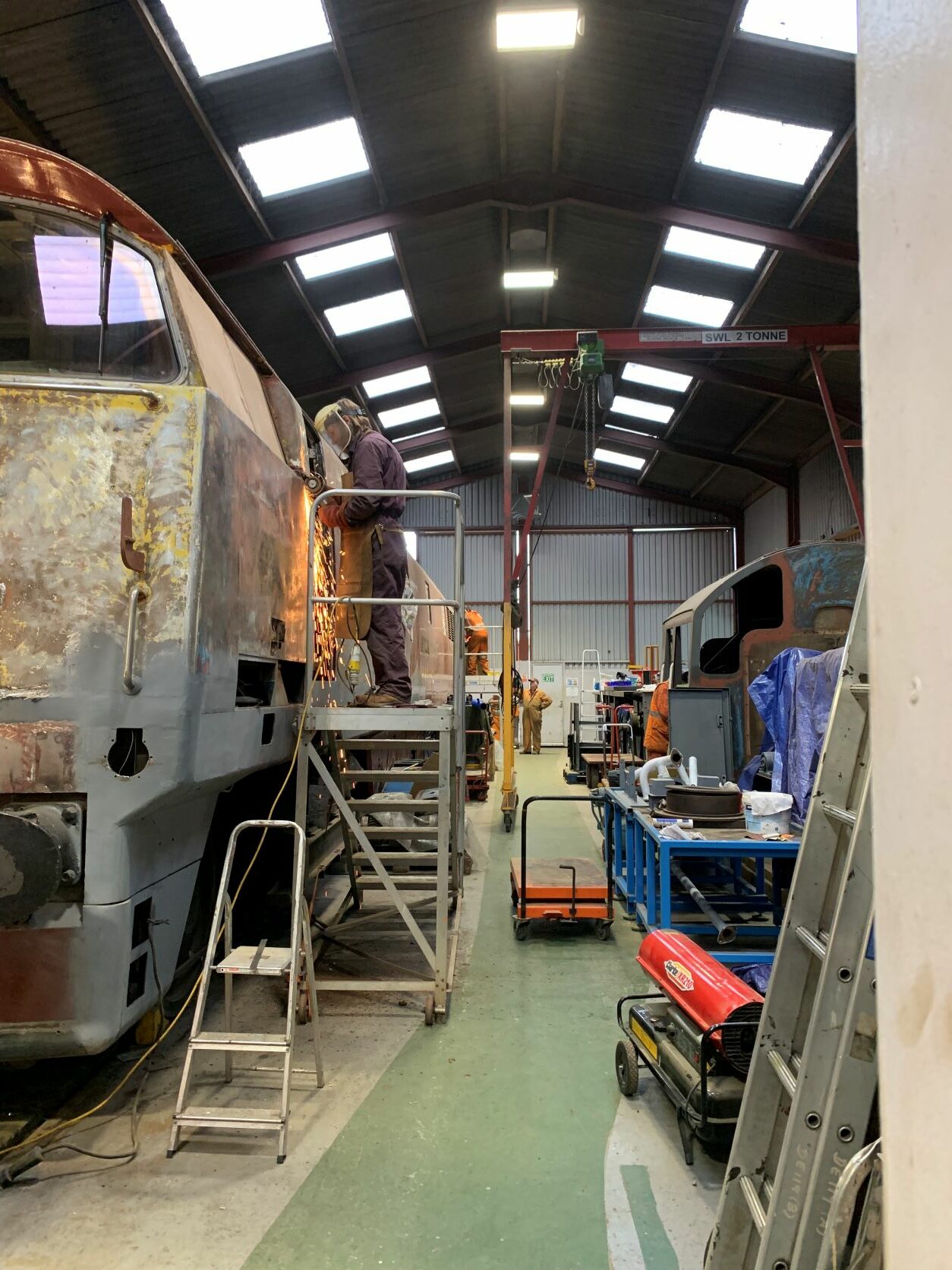
D1010 – the sliding windows and their aluminium frames have been removed from the loco and their place taken by plywood sheeting to protect the driver’s desk from dirt and damage while Colin F cuts out corroded metal and prepares to weld in new metal. Meanwhile, bodywork repairs have started at the ‘A’ end in the distance. Pictured at Williton on Saturday 5th February 2022 by Andy Royal © CC BY-NC 3.0
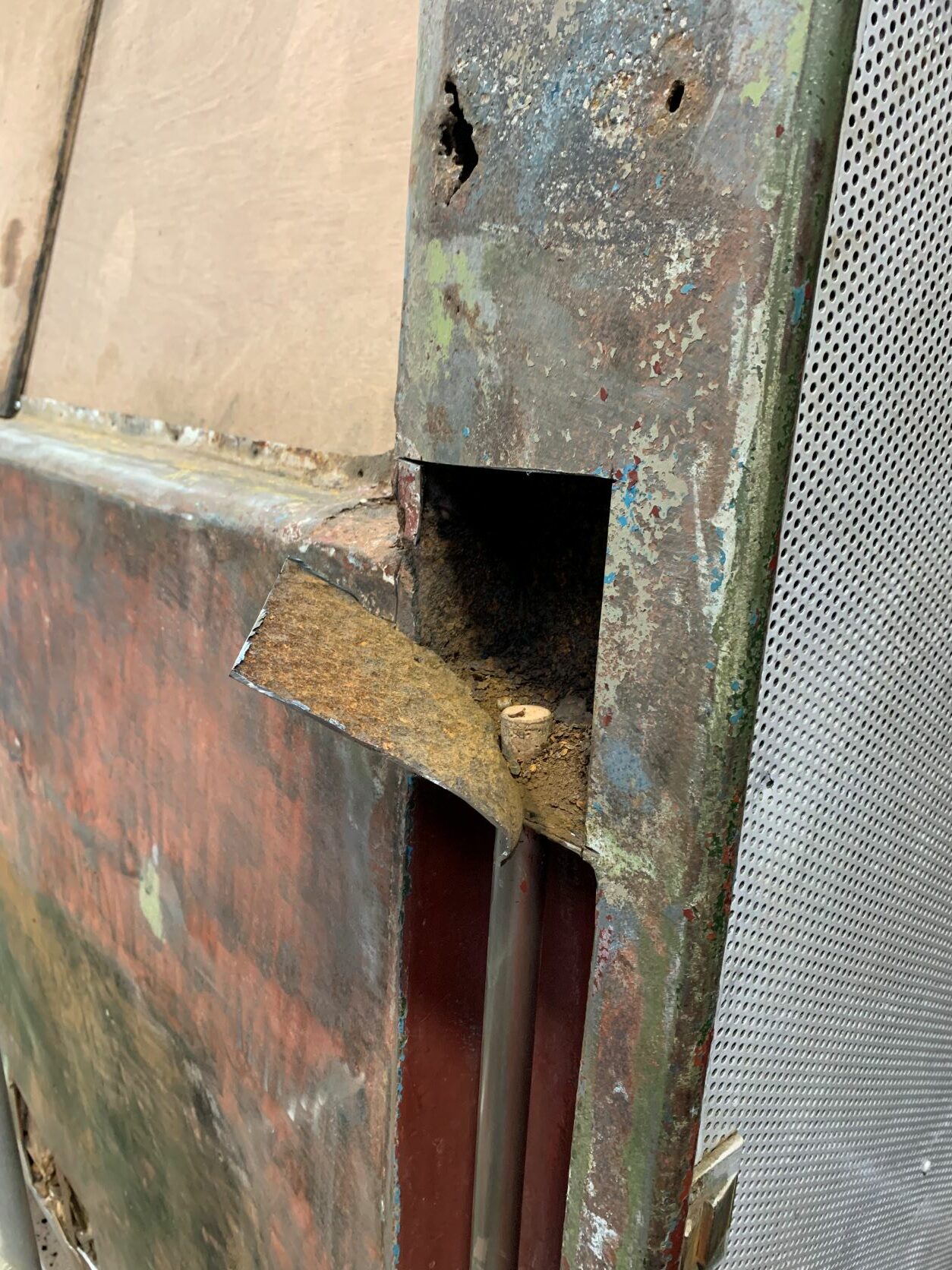
D1010 – the handrail attachment point has been cut open for debris removal and subsequent repair. The simplicity of fitting a cork to prevent the debris from going down inside the tubular handrail will help avoid corrosion taking place at the bottom attachment point. Pictured at Williton on Saturday 5th February 2022 by Andy Royal © CC BY-NC 3.0
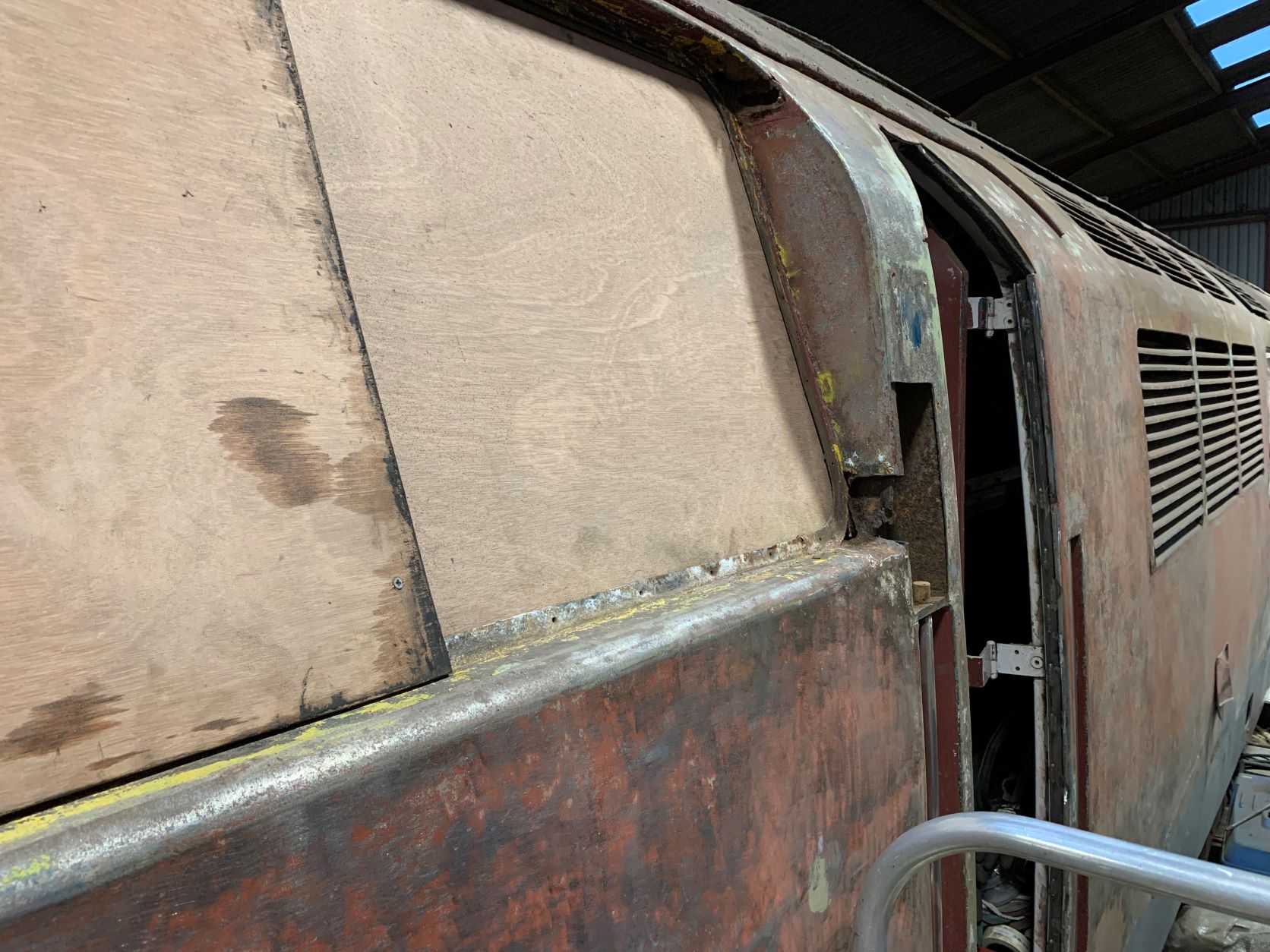
D1010 – with plywood windows and with corroded metal removed to leave a series of wounds in her skin, there is no doubt that the loco is going to look worse before she looks better, but progress is swift and the window frames will be cleaned up and reinstalled within a couple of weeks. Pictured at Williton on Saturday 5th February 2022 by Andy Royal © CC BY-NC 3.0
This loco is the subject of a fundraising appeal so please follow this link to find out more. We need your help ! In addition to funds, we also need plenty of HANDS. If you love the ‘Westerns’ and you are not already a member of the DEPG, please join us so that you can become one of the team that is returning D1010 to full operational condition.
-
 Donate £1 to D1010£1.00
Donate £1 to D1010£1.00 -
 Donate £10 to D1010£10.00
Donate £10 to D1010£10.00 -
 Donate £25 to D1010£25.00
Donate £25 to D1010£25.00 -
 Donate £100 to D1010£100.00
Donate £100 to D1010£100.00
Class 35 ‘Hymek’ D7017 – Neil progressed his work on the fitting of additional fuse protection into the electrical feed for the compressor and exhausters, which is a modification that has already been applied to sister loco D7018. This loco is waiting for its turn over the pit in the Swindon Shed so that her bogie suspension springs can be replaced.
Class 35 ‘Hymek’ D7018 – no change this week.
Class 14 ‘Teddy Bear’ D9518 – more progress as the team continue their program of refurbishment of the individual parts before they get fitted back onto the loco frames. The focus of attention at Williton this week was the buffers, which had to be opened up very carefully because each one contains a giant spring. Another activity that took place off site was the refurbishment of the headcode boxes with their roller-blind indicators. These devices have not been used since the loco left BR service in 1969 and were ignored by the NCB, so 53 years of neglect have been overcome by some very careful restoration on the part of Colin G. The results are visible in the photos below and speak for themselves.
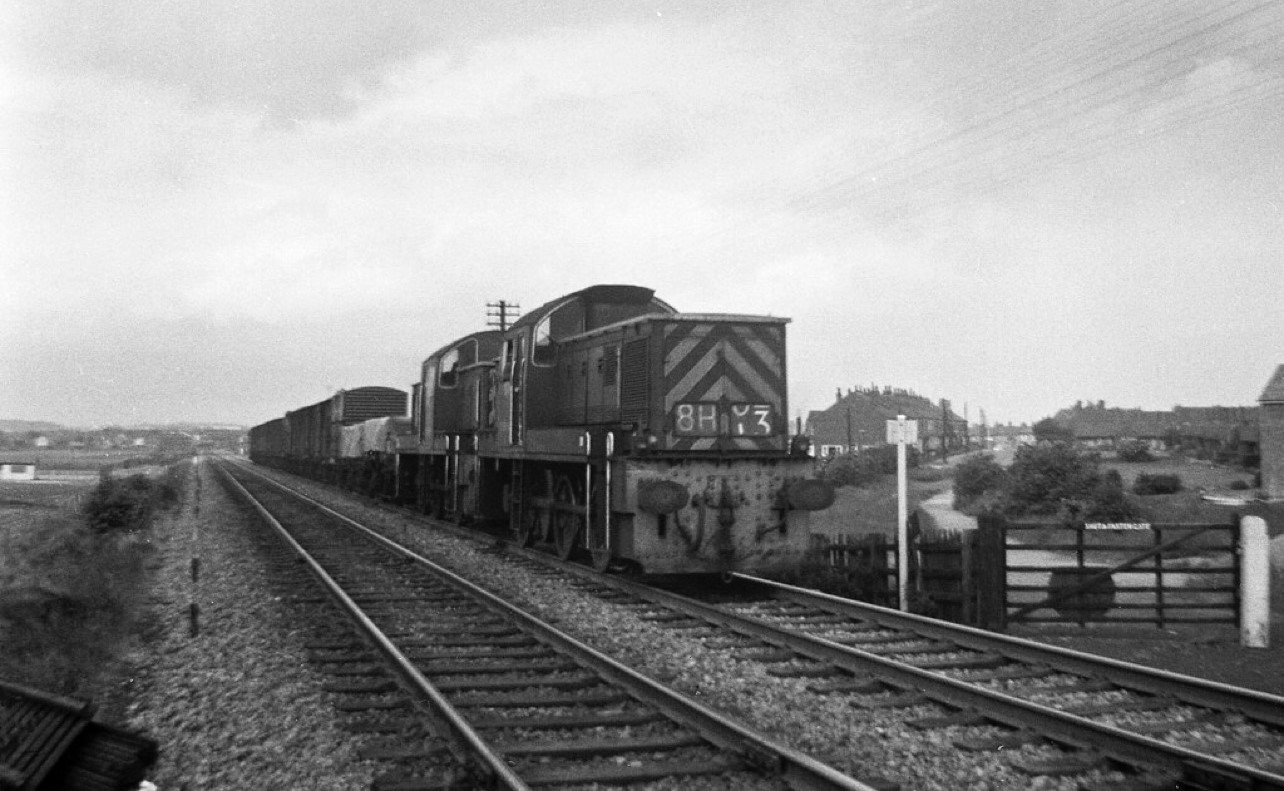
D9518’s sister locomotives D9516 and D9537 are pictured climbing past Halfpenny Lane crossing at Featherstone, West Yorkshire, with the morning 8H13 Healey Mills to Hull freight service on Thursday 29th June 1967. The headcode boxes show some uncertainty on the third digit, but this was fairly typical of the times. Photo by Alan Walker © CC BY-NC 3.0
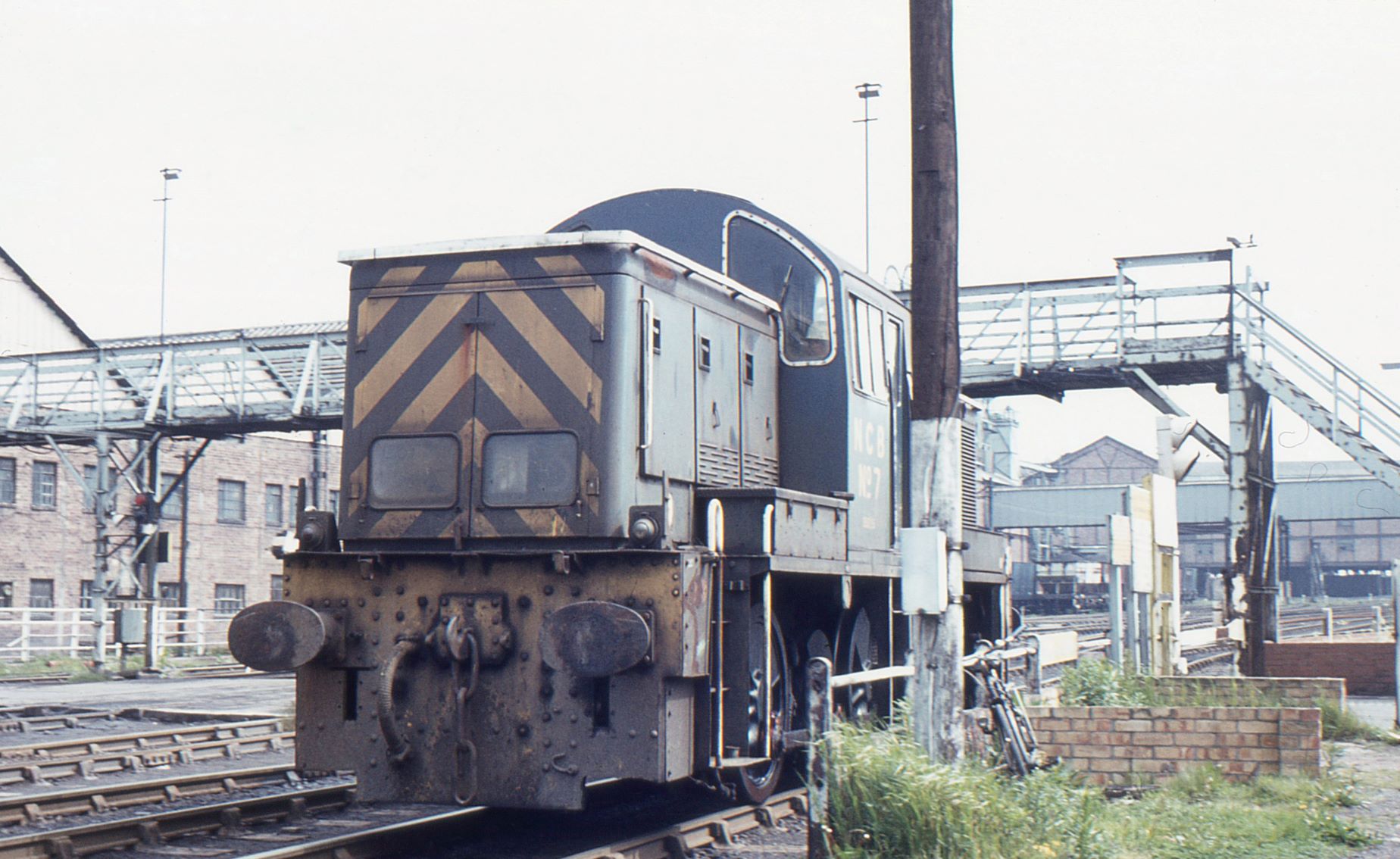
D9518 at work as No.7 at NCB Ashington Colliery, Northumberland, on 25th May 1981 showing the headcode boxes were left in place but ignored by the NCB. The rightmost blind appears to be showing a number 3 or 5 through the grime, but the blind to the left of that is missing altogether. Photo by Colin Girle © CC BY-NC 3.0

D9518 – one of the original 1964-vintage headcode box assemblies has been painstakingly restored by Colin G and is now ready to have new roller blinds fitted. The quality of the restoration work is apparent. Photo dated 5th February 2022 by Colin Girle © CC BY-NC 3.0
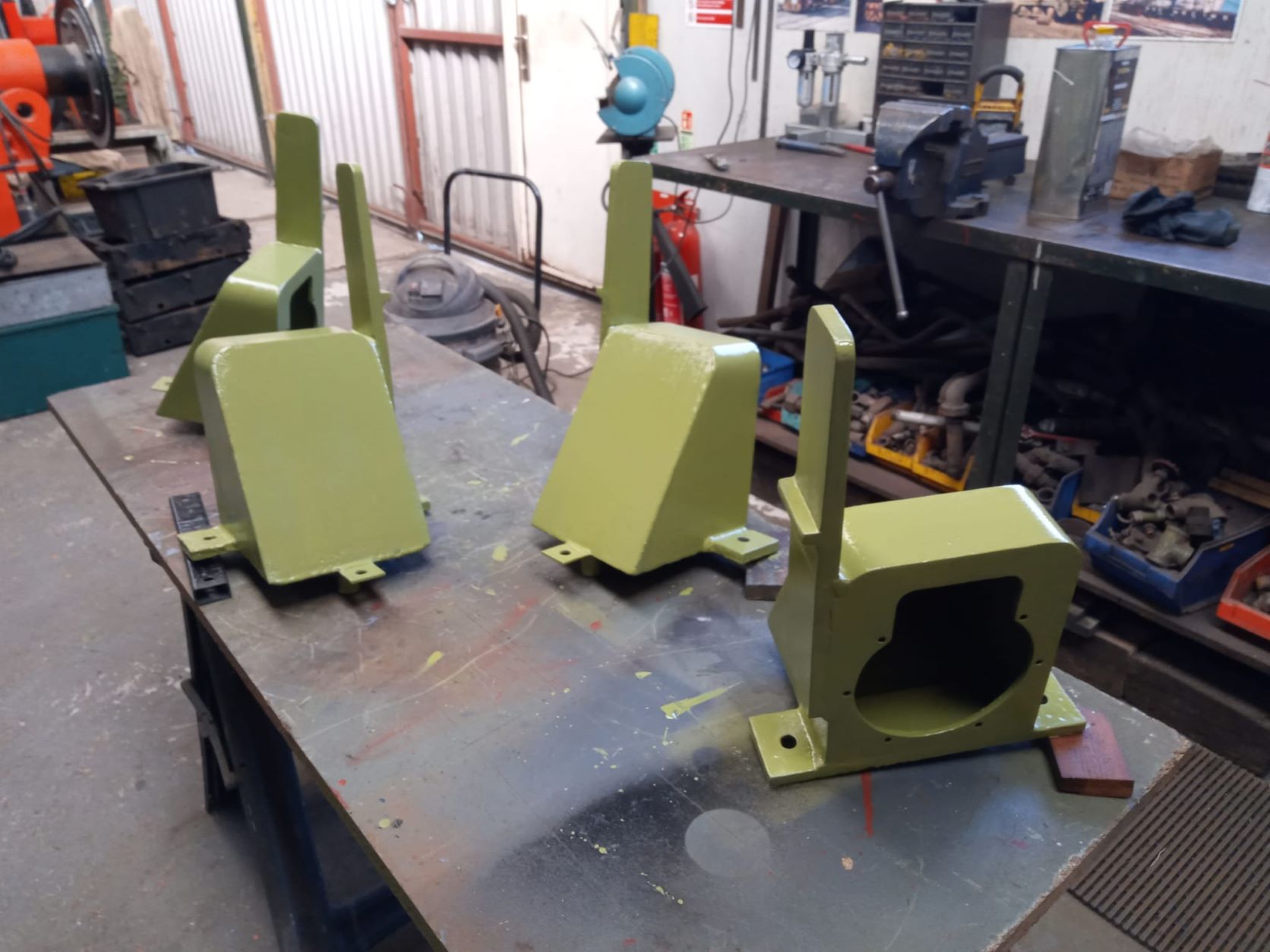
D9518 – the set of four lamp boxes with integral lamp brackets have also been subjected to Colin’s attention and have been repaired and painted in primer, ready to be reinstalled on the loco frames. Photo dated 5th February 2022 by Colin Girle © CC BY-NC 3.0
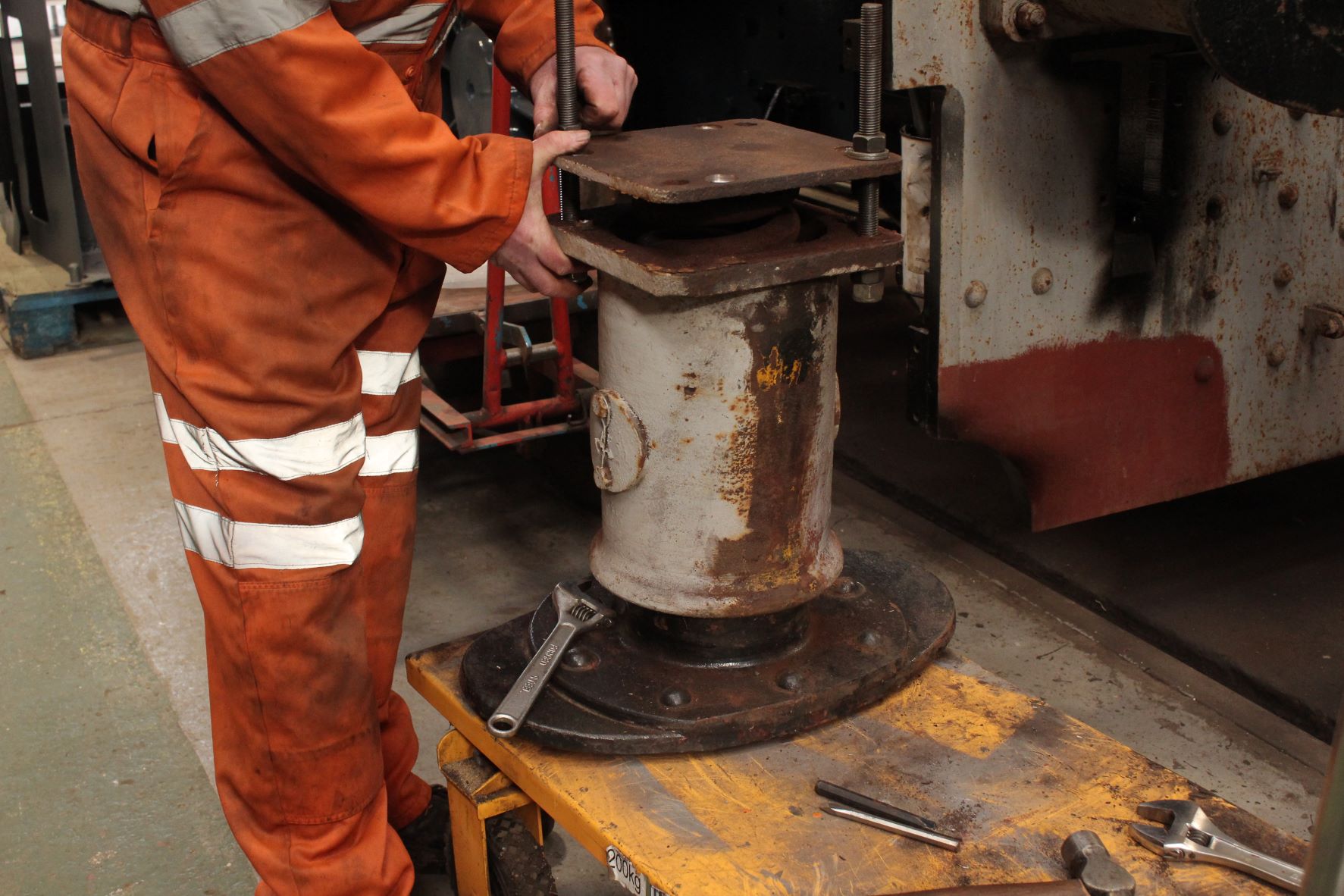
D9518 – the buffers of this loco would have had a very hard life when working at the NCB’s Ashington Colliery, so they have to be opened up and inspected before re-installng them on the locomotive. The work proceeds slowly using two long threaded studs to keep the assembly from flying apart under the pressure of the enormous coil spring that is hidden inside the buffer stock. Pictured at Williton on 5th February 2022 by Terry Deacon © CC BY-NC 3.0
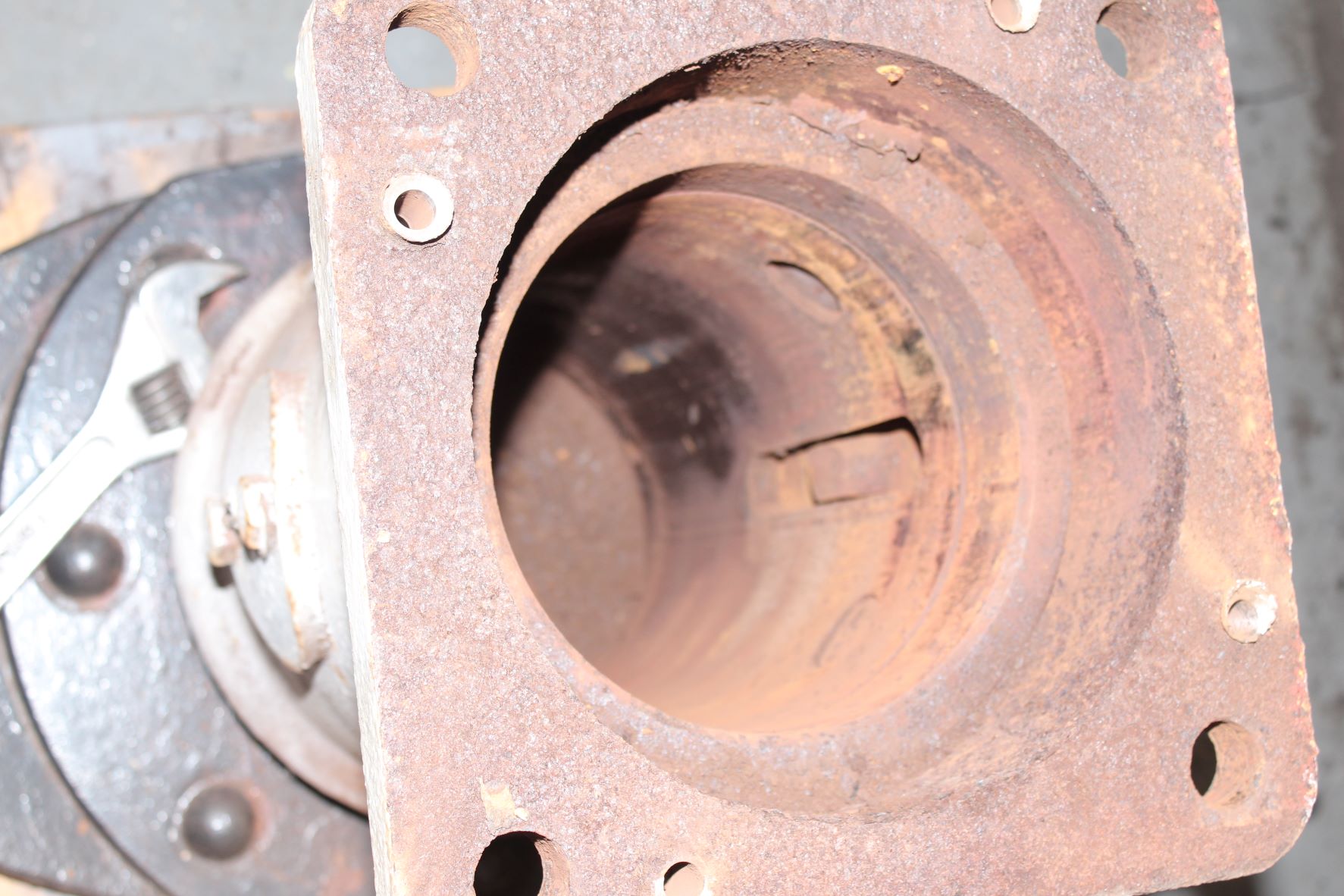
D9518 – the view inside the buffer stock with the end plate and spring removed. The rusty surfaces will be cleaned up and painted and the buffer will be reassembled after the spring has been inspected. Pictured at Williton on 5th February 2022 by Terry Deacon © CC BY-NC 3.0
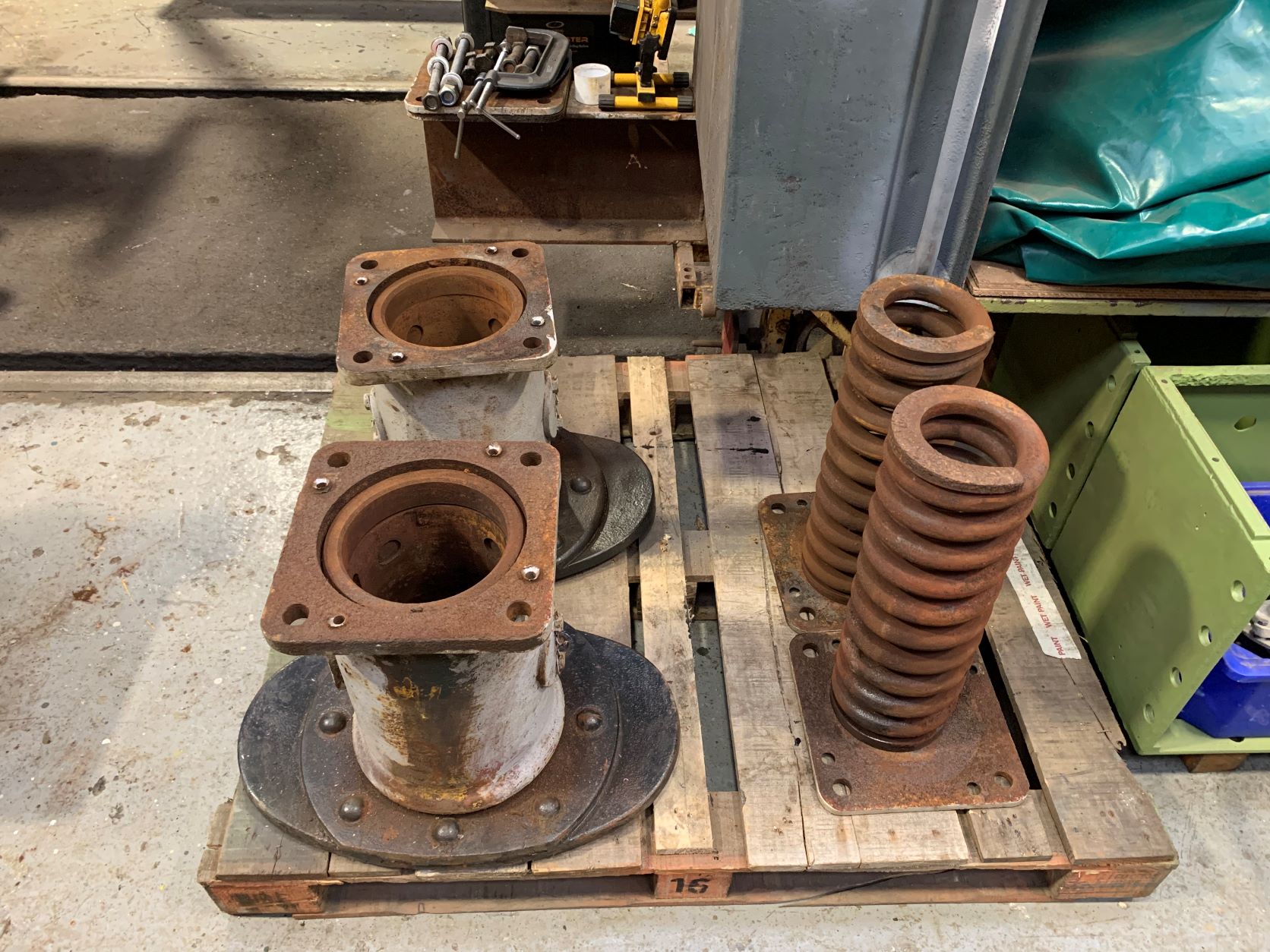
D9518 – one pair of buffers have been disassembled and are now awaiting clean-up and inspection. The size of the springs are apparent from this view ! Pictured at Williton on 5th February 2022 by Andy Royal © CC BY-NC 3.0
The constant progress on this loco project has been made possible by the efforts of volunteers and the donations of the many ‘Teddy Bear’ supporters who have contributed to the D9518 Restoration Appeal. Thank you all very much !
This loco is the subject of a fundraising appeal so please follow this link to find out more. We need your help ! In addition to funds, we also need plenty of HANDS. If you love the ‘Teddy Bears’ and you are not already a member of the DEPG, please join us so that you can become one of the team that is going to return D9518 to full operational condition as ‘NCB No. 7‘.
-
 Donate £1 to D9518£1.00
Donate £1 to D9518£1.00 -
 Donate £10 to D9518£10.00
Donate £10 to D9518£10.00 -
 Donate £25 to D9518£25.00
Donate £25 to D9518£25.00 -
 Donate £100 to D9518£100.00
Donate £100 to D9518£100.00
Class 14 ‘Teddy Bear’ D9526 – this loco is currently based at the Kent & East Sussex Railway and will remain at the K&ESR until May 2022, by which time her older sister D9504 should have completed her heavy overhaul and be returned to traffic. We look forward to seeing D9526 back at Williton in time for the WSR’s 2022 Diesel Gala that takes place from Thursday 9th through Saturday 11th June 2022. This loco was in action on Saturday 5th February 2022 when she hauled an Empty Coaching Stock (ECS) movement on the K&ESR.
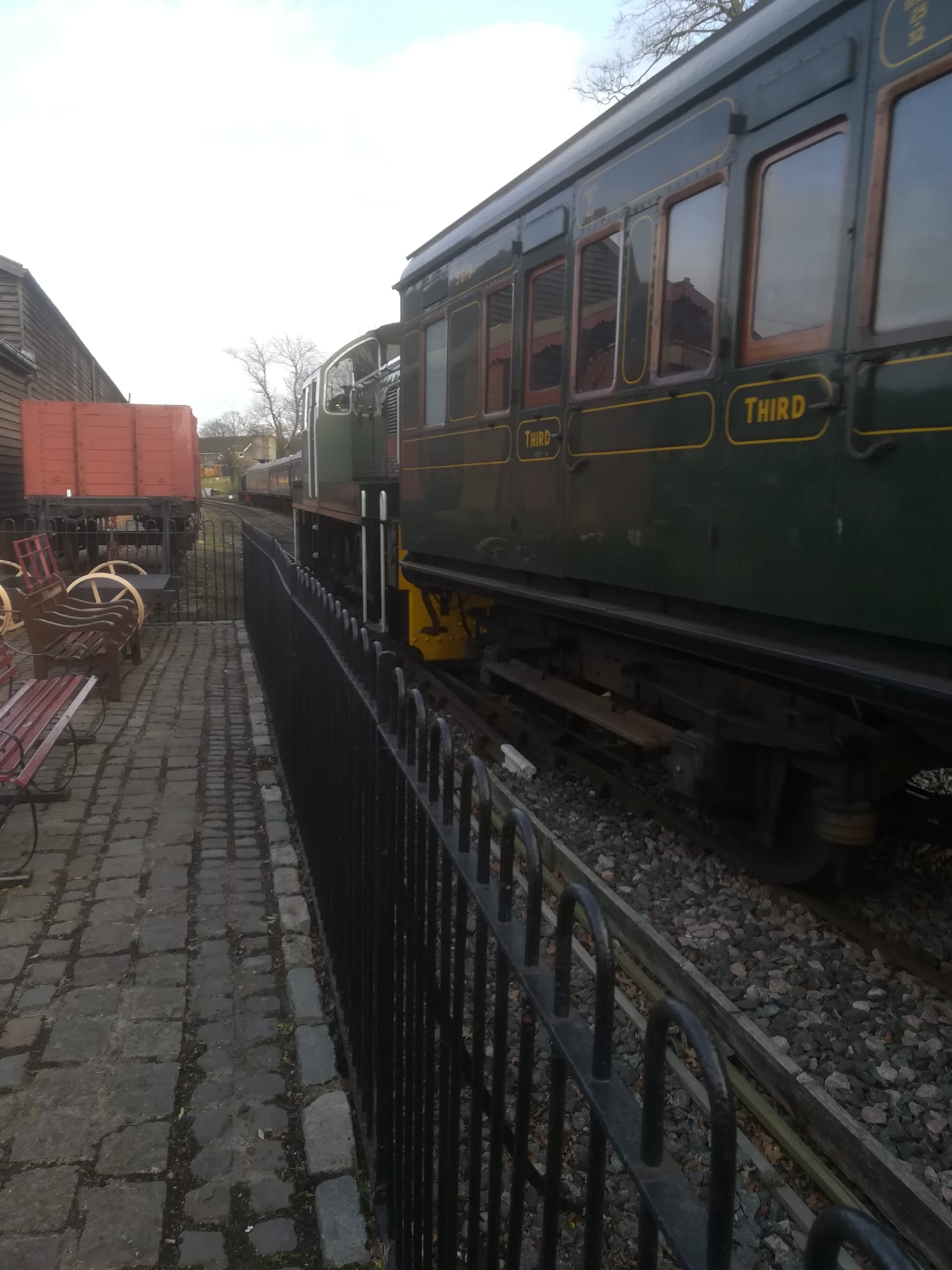
Class 14 D9526 was in use on the K&ESR on Saturday 5th February 2022, hauling a set of Empty Coaching Stock (ECS), including this 1931 Maunsell corridor coach, on a repositioning move. Photo by Mike Grimwood © CC BY-NC 3.0
Andrew Barclay 0-4-0DH 578 – this loco is currently in the Swindon Shed at Williton receiving attention from the WSR Restorations team who are performing a partial repaint that will then allow the loco to be stabled in the yard for the rest of the winter. The loco is currently wearing undercoat and will receive a coat of gloss when weather conditions allow.
If you can help by donating your time, then please JOIN US and come along to the depot for an introduction to what we do and how we do it. We currently have people on site from Saturday through to Tuesday and we can open on other days if we can be sure of getting at least two volunteers on site at all times, so there is plenty of scope. We have tasks of all types to suit most capabilities, both skilled and unskilled. Here’s some photos of the work that has taken place during the last week:
Many thanks to all of our volunteers who give up so much of their time to work on the cleaning, painting, maintaining, restoring, managing and fund raising for our fleet of heritage locomotives !